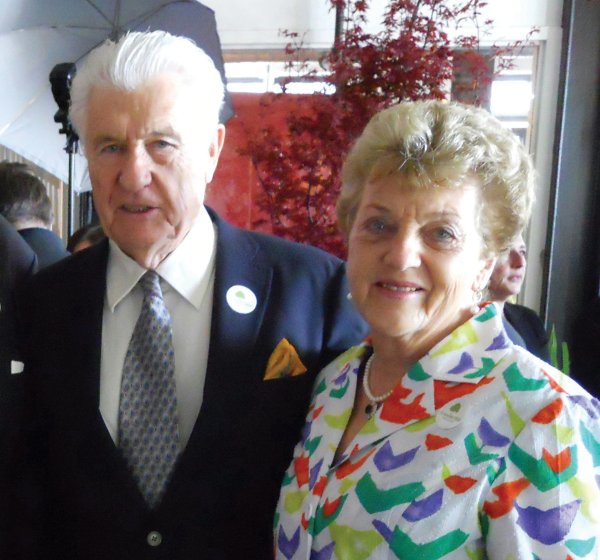
When Glebe Presbyterian Church amalgamated with Leaside Presbyterian Church three years ago, it wasn’t just a sign of the times – a property-rich but cash-poor congregation with declining membership merging with another congregation in order to survive – although it was that to some extent. It was also a family reunion of sorts, with parent and child coming back together after decades apart.
The Leaside church began life in 1942 as a mission or daughter church of Glebe Presbyterian which had already been a thriving congregation for thirty years. [See excerpt from Jane Pitfield’s Leaside, published in 2000].
“It was a different era then, when churches were expanding, as opposed to today when they’re contracting,” says Paul Kocher of Laird Dr. in North Leaside, “and the Glebe was a more established neighbourhood [near Manor Rd. between Yonge and Mt. Pleasant] than Leaside at the time.” But sixty years later circumstances had changed.
“Our biggest issue at Glebe was one of human capital,” says Kocher, who was part of his church’s leadership team throughout the amalgamation process that began in 2009. “The same people were circulating through the various leadership roles; the ability to sustain a vibrancy wasn’t there. We went through a process of discernment that provided the members the chance to shape their own future as well as sufficient time to let go of their past, which was critical. For a lot of people who had been a part of the church all their lives, letting go was not easy, but the discernment process made it a lot more manageable for them.”
Peter Gordon has been part of the Leaside congregation for many years and currently chairs the board of trustees. “In the Amalgamation Agreement, which had to be approved by Presbytery [the denomination’s regional governing body], both churches agreed on a formal plan covering four areas: our ministry, our people, renovations to our physical plant, and our legacy. And we did that recognising that we could be more effective together than apart.”
The two congregations merged as of 1 January 2013. The Glebe building was sold and the assets transferred to the new entity. “The Leaside building is 65 years old,” says Gordon, “and was in need of fairly extensive renovations, which began in 2014 and are now nearing completion.”
By the agreement, both senior ministers remained on staff although the Glebe’s Bill Elliott has since retired and the Rev. Nick Athanasiadis, who has been at Leaside since 1999, continues as the senior minister.
“Both ministers did everything they could to ensure a smooth transition,” says Kocher. “Nick has been very welcoming to those of us from GPC and flexible too; a great combination. He was open to changes to accommodate the Glebe people and their sensibilities. He was deliberately open to the idea of changing the LPC name if that would have been helpful.”
Kocher recommended they not change the name. “There’s value in the brand when it’s been around for a long time; changing the brand can hurt; the ties to the legacy brand are very important. But the fact that Nick was open to the idea was a meaningful gesture and appreciated by the GPC people.”
With respect to the church’s outreach programs, Athanasiadis says, “We try not to spread ourselves too thin by doing too many things; instead we want to do a few things well and commit for the long term.” The congregation focuses its outreach efforts in four main areas. First is a “Kids Club”, for children up to 13 years of age from the wider community. “It’s an organised program on PD days, Christmas holidays, March Break and the last week of the summer before Labour Day; everyone is welcome and people who might not be able to afford it can come anyway.”
Second is a long-standing relationship with Evangel Hall, a Presbyterian agency in downtown Toronto for the underhoused and homeless, that the congregation supports financially and with volunteers. Athanasiadis’s colleague, the Rev. Angela Cluney, says, “the young people of the church are especially committed to this; they prepare and serve dinners at ‘the Hall’ five or six times a year. It’s a tremendous outreach providing homeless seniors with a support network, dental care and other needed services.”
Third is ARISE, which stands for Advocacy and Reclaiming Individuals Involved in the Sex Trade through Empowerment. “This was a very deliberate move by the congregation to find something specific in the community that we could take ownership of and do some good outside our doors,” says Athanasiadis.
And fourth is Refugees. “We are currently working with two other churches (Rosedale and Morningside) to sponsor a family from Syria. We know the family but they’re not here yet, unfortunately – the Feds have dropped the ball.”
Today Leaside Presbyterian Church has approximately 175 members, another 50 adherents, “and many others from the community who are associated with the church informally.”
Athanasiadis says that the amalgamation of the two congregations “has enabled us to do things together we never would have been able to do alone. It’s like a marriage, you don’t know how it’s going to go until you’re in it. But now, three years later, it’s a gift.”
Paul Kocher, the former Glebe member agrees. “I have some experience with M&As [mergers and acquisitions] in my professional life: if you come in with an attitude that it’s going to be successful, it will be – that mindset is very important. The people from both legacy churches came into this with that mindset; and things have gone smoothly.”





